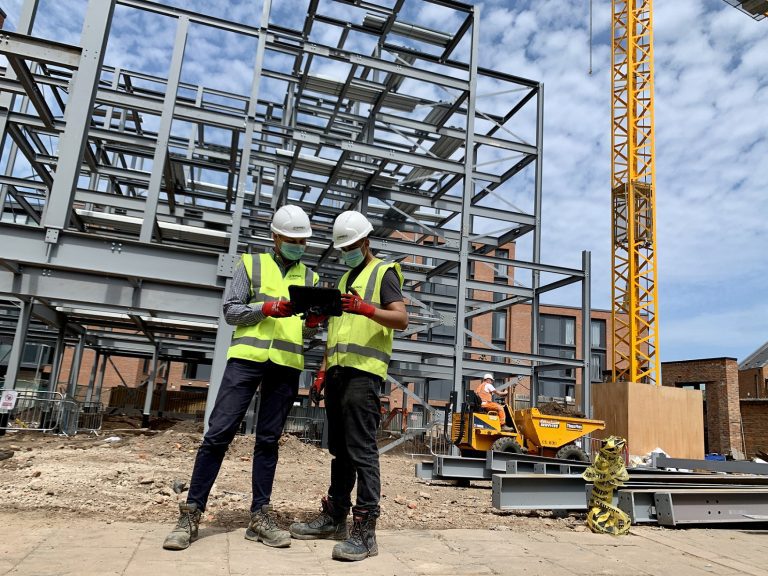When discussing health and safety, the manufacturing industry is among the riskiest. In the U.S., 5% of total workers have occupations within the manufacturing industry, and according to the U.S Bureau of Labor Statistics, the manufacturing industry accounted for 15% of all nonfatal injuries and illnesses across all private industries in 2019. With that being said, implementing a safety program with the help of a health and safety management software solution is crucial, not only to reduce and ideally eliminate work-related injuries, illnesses, and accidents. However, a functional safety program can also help the manufacturing company to more efficiently meet its objectives. While we obviously can’t put a price tag on human lives, manufacturing businesses in the U.S. spend hundreds of billions per year on workplace injuries, illnesses, and fatalities. Investing in a health and safety management software solution and a comprehensive safety program, while considering that cost, can allow manufacturing businesses to save more money in the long run while also promoting a positive brand reputation and higher employee morale. Implementing Safety Program in a Manufacturing Business While safety programs should be made unique for each business, almost all, if not all safety program should include these elements in some form: Management Commitment To Safety A statement from members of management (business owner, plant manager, project manager, etc.) that they are committed to the implementation and execution of the safety program. This statement can be something along the line of “management is committed to employee health and safety”, but the management’s commitment should be put into practice by defining and implementing safety policies, as well as investing in the required infrastructures and systems to identify and reduce hazards. Written Safety Policies Manufacturing businesses are considered relatively high-risk when it comes to health and safety, and you should check OSHA’s requirements for written safety programs here to identify which safety standards apply to your manufacturing business. Also, you should conduct a safety audit and compliance gap analysis to determine the written safety policies and programs needed. Manufacturing health and safety management software solution by iReportSource can help you in performing an accurate safety audit for this step. Hazard Identification and Control Implementation Safety audit and/or risk assessment should be extended into a functional hazard identification system so the manufacturing business can implement effective control for each identified hazard. This aspect should include: A system to collect and review information about hazards and near-misses, including a reporting system A system for investigating near misses, incidents, injuries, and work-related illnesses to determine the hazards causing these issues and how to control them. A system for fixing hazard, or at least mitigating the effects of the said hazards Communicating hazards to workers and management to ensure correct implementation of control measures Safety-oriented SOPs (Standard Operation Procedures) should also be developed to provide detailed guidelines on repetitive business processes, especially those with potential hazards. It’s crucial to understand that hazard identification and control is a continuous rather than a one-off process. Both workers and management should stay committed to observe various elements of t he manufacturing businesses to identify potential hazards and always be prepared to develop and implement new control measures. Workers’ Involvement In an effective health and safety program in a manufacturing company, workers should be involved both in the development of policies and their implementation by: Actively participating in the program’s development and implementation, and should be encouraged to provide input Feeling comfortable in reporting safety and health concerns Not fearing any retaliation when they raise any health and safety concerns, for example, when they report any near misses and/or work-related injuries Safety Training A key part of any health and safety program is the correct implementation of safety training. It’s crucial to determine which areas of the manufacturing business require specialized training, and which ones can be integrated into annual general safety training and/or new employee onboarding classes. Having a system in place to track employee’s involvement in safety training classes, as well as their current proficiency levels and when refresher classes must be delivered is also crucial, and this is also where a safety management software solution can help. We can use various different approaches in implementing safety training: in formal classrooms, peer-to-peer training, on-the-job practical training, demonstrations, and so on. The goal of the safety training is to ensure the correct understanding of hazards and the control policies for each hazard to promote health and safety best practices for everyone. Reporting System and Policies If you are a U.S.-based business, you are legally required to keep records of occupational injuries and illnesses in an OSHA 300 form. It’s crucial to encourage a workplace culture where reporting accident and incident is encouraged, and employees should always report: Any work-related fatality Any work-related illnesses or injuries that result in restricted work, days unable of performing work, transfer to another job, and/or loss of consciousness Any work-related illnesses or injuries that require further medical treatment beyond first aid Any near-misses Any work-related diagnosed chronic irreversible diseases, fractured/cracked teeth and bones, punctured eardrums, and cancer If your manufacturing business has multiple establishments, then you are required to keep injury and illness records for each establishment. Incident Investigation System The manufacturing business should implement an incident investigation system to thoroughly understand all factors that may cause an incident. While the actual process may vary, it typically includes: Gathering data and facts about the incident like visiting and observing the incident site, interviewing witnesses, analyzing logs, etc. Developing a timeline of events leading to the incident based on the data gathered Causal analysis using the information collected above Determining corrective actions based on the causal factors determined in the previous step Communicating the knowledge gained from the investigation process to related workers and management











